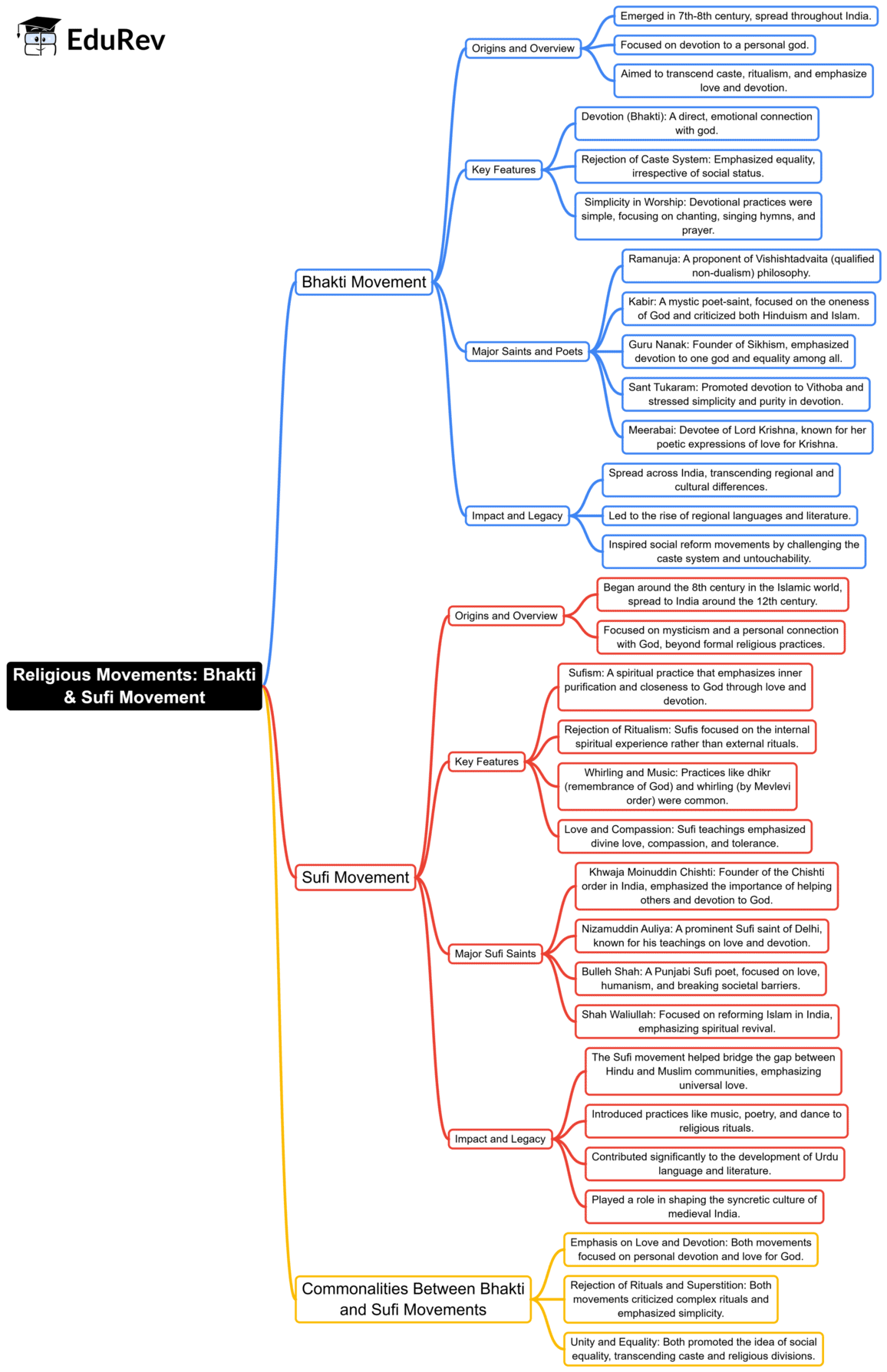UPSC Exam > UPSC Notes > History for UPSC CSE > Mind Map: Religious Movements: Bhakti & Sufi Movement
Mind Map: Religious Movements: Bhakti & Sufi Movement | History for UPSC CSE PDF Download

The document Mind Map: Religious Movements: Bhakti & Sufi Movement | History for UPSC CSE is a part of the UPSC Course History for UPSC CSE.
All you need of UPSC at this link: UPSC
|
110 videos|653 docs|168 tests
|
FAQs on Mind Map: Religious Movements: Bhakti & Sufi Movement - History for UPSC CSE
| 1. What are the main features of the Bhakti movement? |  |
Ans. The Bhakti movement was characterized by its emphasis on personal devotion to a deity, rejecting ritualistic practices and caste distinctions. It encouraged a direct, personal relationship with God through love and devotion, often expressed through poetry, music, and dance. Key figures included poets like Kabir, Mirabai, and Tulsidas, who promoted the idea that anyone could attain spiritual enlightenment regardless of their social background.
| 2. How did the Sufi movement influence the Indian subcontinent? |  |
Ans. The Sufi movement introduced concepts of love, tolerance, and mysticism into the spiritual landscape of the Indian subcontinent. Sufi saints, such as Nizamuddin Auliya and Khwaja Moinuddin Chishti, emphasized the unity of God and the importance of devotion, often bridging gaps between different religious communities. Their teachings encouraged communal harmony and a focus on inner spirituality rather than external rituals.
| 3. What are the similarities between the Bhakti and Sufi movements? |  |
Ans. Both the Bhakti and Sufi movements emphasized love and devotion to God, advocating for a personal connection with the divine. They rejected rigid orthodox practices and caste distinctions, promoting inclusivity and unity among different social groups. Additionally, both movements made significant use of poetry and music to convey their spiritual messages, fostering a rich cultural heritage.
| 4. Who were some prominent figures in the Bhakti and Sufi movements, and what were their contributions? |  |
Ans. Prominent figures in the Bhakti movement include Kabir, who challenged social norms and emphasized a personal relationship with God, and Mirabai, who expressed her devotion through devotional songs. In the Sufi movement, figures like Khwaja Moinuddin Chishti became known for their teachings on love and compassion, establishing Sufi orders that promoted spiritual practices and community service.
| 5. How did the Bhakti and Sufi movements contribute to the socio-religious landscape of India? |  |
Ans. The Bhakti and Sufi movements played a crucial role in shaping India's socio-religious landscape by promoting ideas of equality, tolerance, and devotion. They helped weaken the rigid caste system and encouraged social reform, leading to greater acceptance of diverse beliefs. Their influence can be seen in the rich traditions of music, poetry, and dance that emerged, fostering a sense of shared cultural identity among various communities.
Related Searches
















